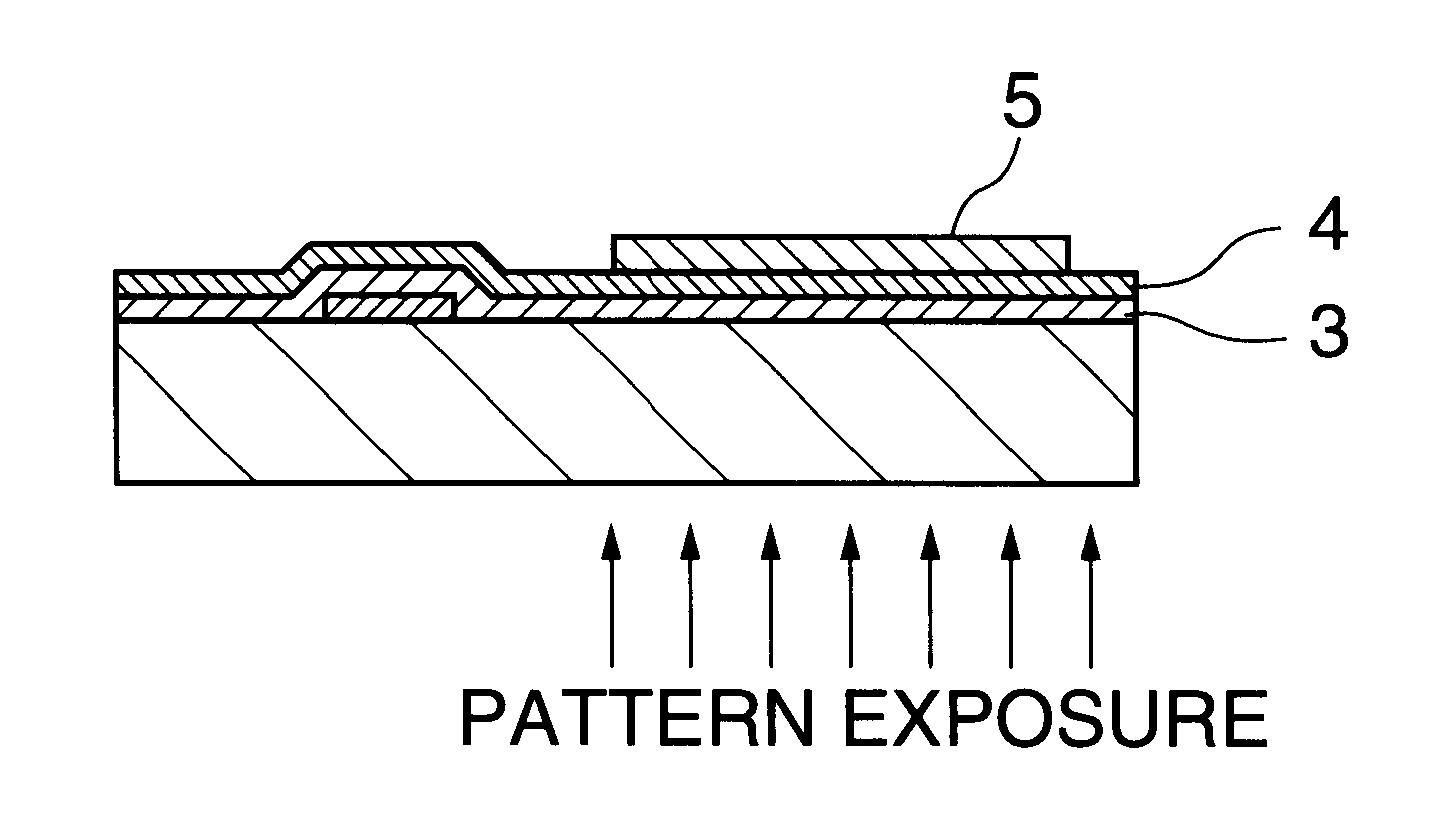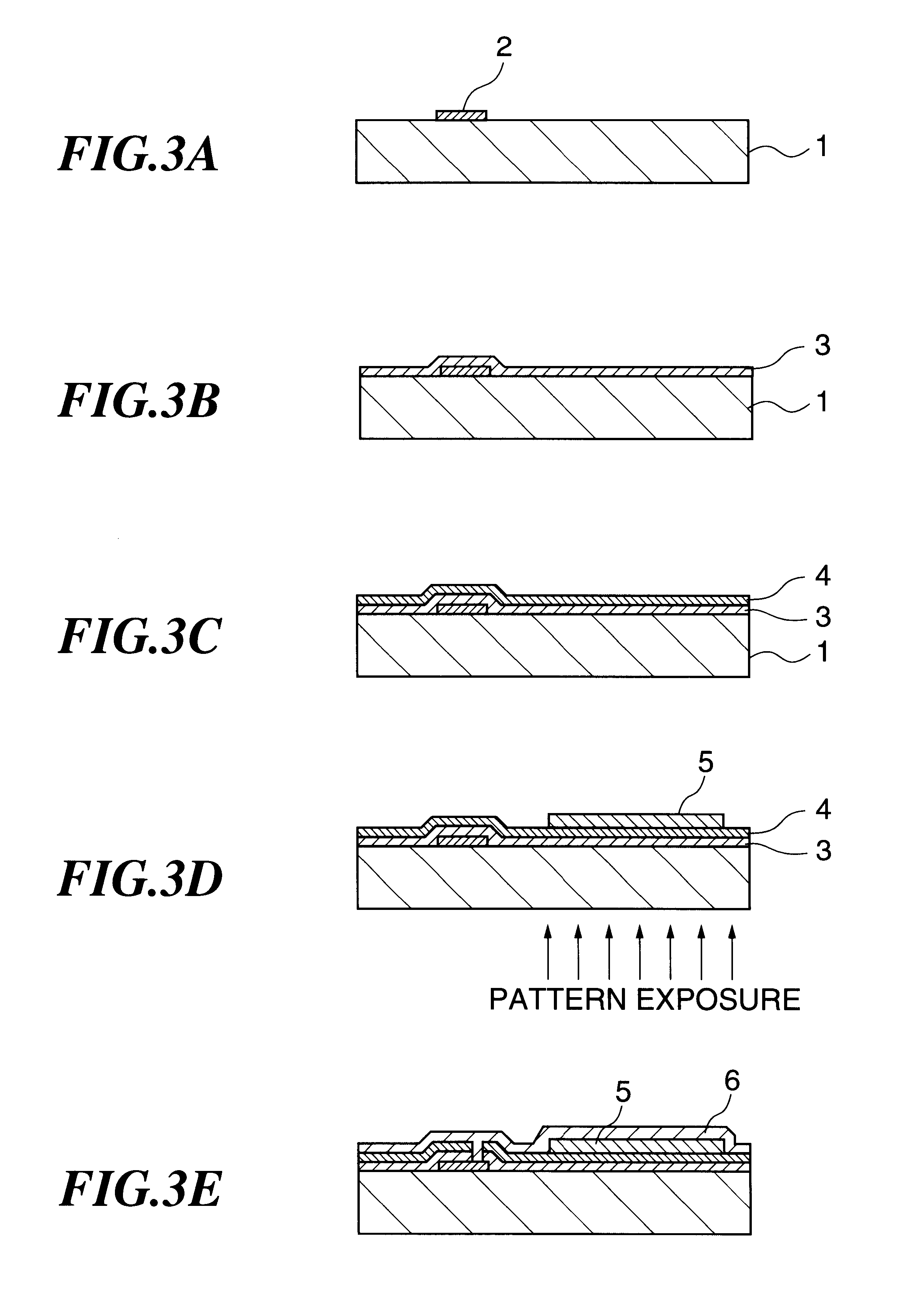Method of forming colored film, driving device and liquid crystal display device
a technology of driving device and liquid crystal display device, which is applied in the direction of static indicating device, original photomechanical treatment device, instrument, etc., can solve the problems of high cost, poor light fastness, and difficulty in forming colored films
- Summary
- Abstract
- Description
- Claims
- Application Information
AI Technical Summary
Problems solved by technology
Method used
Image
Examples
second embodiment
The constitution for the driving device according to the present invention is determined depending on the constitution of the substrate and the constitution of the conductive film and the thin photosemiconductor film to be formed but there is no other particular restrictions and it may be a constitution shown, for example, in FIG. 3D and FIG. 3E, FIG. 4D and FIG. 4E, FIG. 5B and FIG. 7B, in which electronic circuit material (active element) is disposed in the first or The substrate may be of any constitution, and can be properly selected from commercially available substrates or selected properly from the substrates as described previously.
first embodiment
The driving device of the first embodiment is a driving device with a colored film in which a conductive film and a thin photosemiconductor film are laminated in this order on a substrate having an active element with a source electrode, a drain electrode and a gate electrode, the conductive film is electrically connected with the drain electrode and, further, a colored film is electrodeposited on the thin photosemiconductor film to be in contact with the electrolyte by the method of forming the colored film according to the present invention as described previously.
The driving device of the second embodiment is a driving device with a colored film in which thin film transistors as the active element each having a source electrode, a drain electrode and a gate electrode are arranged in a two-dimensional matrix together with the conductive film adjacent with the thin film transistors and, further, the gate electrodes are connected with the first common electrode, the source electrode...
example 1
Electrodeposition Substrate Forming Step
A thin film transistor (TFT) was disposed on one surface of an alkaliless glass support of 0.9 mm in thickness and a transparent conductive film made of a ITO (thin ITO film) of 0.1 .mu.m in thickness was formed by a sputtering method on the identical surface of the substrate adjacent with the drain electrode constituting TFT in a region not formed with the TFT to prepare a substrate having an identical cross sectional structure with that shown in FIG. 4B. The TFT 2 and the thin ITO film 3 are connected by way of a conduction channel 7, that is, a drain electrode constituting the TFT 2. Then, a TiO.sub.2 film (thin TiO.sub.2 film) of 0.2 .mu.m in thickness was formed by a sputtering method on the entire surface of the glass support 1 so as to cover the TFT 2 and the thin ITO film 3 to obtain an electrodeposition substrate of a structure shown in FIG. 4C.
For improving the current characteristic of the thin TiO.sub.2 film on the electrodepositio...
PUM
| Property | Measurement | Unit |
|---|---|---|
| Fraction | aaaaa | aaaaa |
| Fraction | aaaaa | aaaaa |
| Angle | aaaaa | aaaaa |
Abstract
Description
Claims
Application Information
 Login to View More
Login to View More - R&D
- Intellectual Property
- Life Sciences
- Materials
- Tech Scout
- Unparalleled Data Quality
- Higher Quality Content
- 60% Fewer Hallucinations
Browse by: Latest US Patents, China's latest patents, Technical Efficacy Thesaurus, Application Domain, Technology Topic, Popular Technical Reports.
© 2025 PatSnap. All rights reserved.Legal|Privacy policy|Modern Slavery Act Transparency Statement|Sitemap|About US| Contact US: help@patsnap.com



